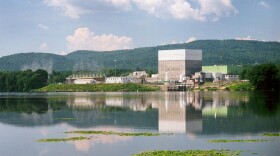A federal regulator has turned down a request from the parent of the Indian Point nuclear power plant concerning the level of earthquake risk.
The Nuclear Regulatory Commission has finalized its screening and prioritization for seismic hazard reviews for U.S. nuclear power plants. This comes after Entergy Nuclear had argued that its Indian Point 3 reactor should be moved from Group 1, the highest priority when it comes to examining earthquake risk, to Group 2 or 3. Jerry Nappi is spokesman for Entergy.
“Entergy previously conducted an engineering analysis that demonstrated Indian Point 3 is safe and protected from the strongest earthquake that could be expected at that location,” says Nappi. “And the data we had submitted, the analysis and the data, we believe had demonstrated that Unit 3 would have screened out of the additional priority review process.”
NRC Spokesman Neil Sheehan says the Commission disagreed.
“Ultimately we concluded that both Indian Point units should be in this highest category of seismic evaluation,” says Sheehan. “What that means is they’ll need to give us a plan by the end of this month outlining how they plan to address those issues. And then they’ll have to submit to us in 2017 a detailed risk evaluation for the plant, and that could involve making modifications, for example, if they had to make some fortifications to piping or other systems or components. They may have to do that and that would have to be described in this plan.”
The deeper look into seismic risk, while a topic of review for the NRC from an earlier point, took on greater urgency following the 2011 Fukushima nuclear disaster in Japan. In addition, notes Sheehan, there is now better modeling to calculate seismic risk.
“There’s now far superior data that’s available about seismic activity in the region. There are superior computer models that can take a closer look at what some of the impacts would be if there were to be a severe earthquake,” says Sheehan. “And, based on all of that, we believe that both Indian Point units fall under the category where they should have to do this more detailed risk analysis and enhancement analysis.”
And, he says, Entergy has to submit those analyses by June 2017. Nappi explains why Entergy argued to have Indian Point 3, in particular, moved to a lower-risk category.
“Well, although they are at the same site, they’re two separate plants, so two separate analyses would have had to have been conducted,” says Nappi. “They’re very time consuming, very comprehensive, and we had completed the one for Unit 3 because there was a prior owner who maybe did not do as comprehensive and thorough an analysis. So we wanted to make sure that the NRC and our stakeholders knew that Unit 3 was safe from the worst earthquake that could be expected. There really wasn’t a question at Unit 2 because there was a different owner at that time who conducted a more thorough analysis.”
Con Edison was the previous owner of Indian Point 2, and the New York State Power Authority of Indian Point 3. Westchester-based Indian Point sits near the Ramapo Fault, and while Entergy does not believe the fault poses safety issues for the plant, opponents have questioned Entergy’s ability to handle high-magnitude earthquakes.
Sheehan says there are 10 nuclear power plants representing 18 reactors that fall into the highest priority group for seismic risk. That’s out of 100 commercial reactors operating across the U.S.







